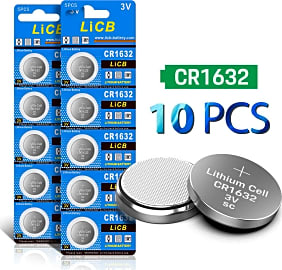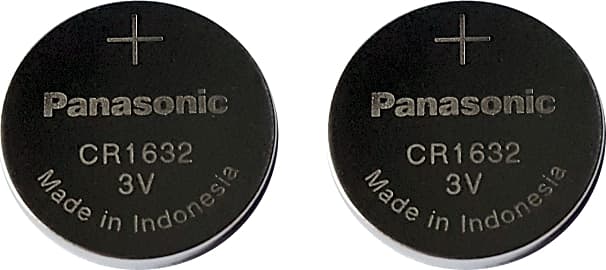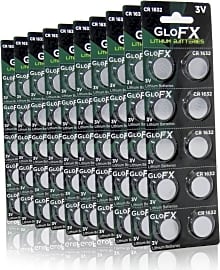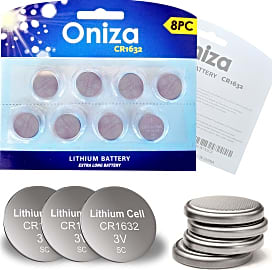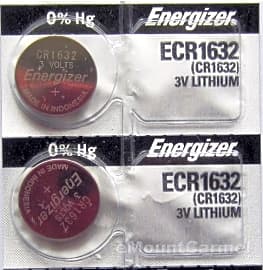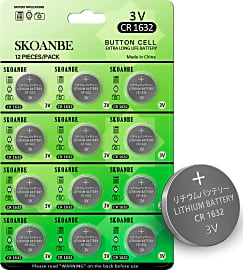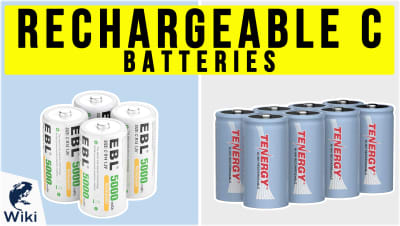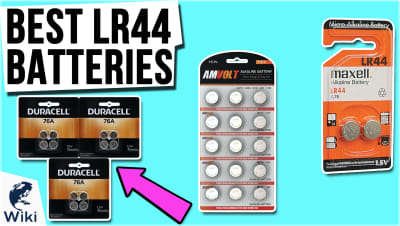The 8 Best CR1632 Batteries

This wiki has been updated 26 times since it was first published in November of 2017. If you're worried that your car remote, sports bracelet or garage door key fob is going to suddenly stop working when you need it the most, then you should probably keep some CR1632 batteries in your kitchen drawer. These 3-volt lithium coin cells can also keep a plethora of medical devices running, such as digital thermometers, glucose monitors, and heart-rate monitors. When users buy our independently chosen editorial picks, we may earn commissions to help fund the Wiki.
Editor's Notes
April 04, 2021:
I came into this update wanting to leave this list well enough alone, but I've unfortunately felt the need to remove our previous top-rated option because its cost on a per-cell basis just didn't seem to justify its place in our list anymore, especially since the differences between CR1632 buttons of different brands are, at most, minor, and in many cases, superficial or non-existent. Pretty much all CR1632 cells are mercury-free and claim to be tested to rigorous standards, and provide a capacity of around 120 milliamp hours - in other words, CR1632 cells are an economics textbook case of an undifferentiated good. Another reason is that I've found better off-brand substitutes like the Beidongli 10-Count and Skoanbe 12-Pack for currently unexceptional and rather overpriced cells from the likes of Sony and Duracell. Energizer is the exception here in this list, being both relatively cheap and offering good value for money.
February 06, 2020:
The first thing I did during the update was to remove options that had been frequently and recently reported as having DOA (Dead on Arrival) cells. This is a common issue when buying batteries, and it’s important to collate findings from multiple user reviews regarding this issue, since sellers often stock out-of-date batteries that may have been good only last year, especially with lithium ion batteries that age quicker than alkaline batteries, due to their high self-discharge rates.
In this case, I had to remove the Duracell Batteries, as many cells were commonly reported to be DOA, or had significantly lower voltage readings than the rated 3V. They were also much more expensive per unit than other options, and while the company generally makes quality cells, you have to make sure they aren’t overpriced, which would have been the case here, even if they were ‘fresh’ batteries. The Eunicell Blister Pack also had to be removed for the same reason, even though it would have been an otherwise good product, with reliable cells at a low cost-per-unit. In their places, I’ve included some reliable options that also have low unit costs – the LiCB 10-Pack, and Oniza 8 Pack. LiCB generally makes some good cells, along with B-list battery manufacturers like AmVolt and Maxell and Sony; while Oniza is one of those generic brands that I'd never heard of, but just happened to have surprised me with their CR1632 cells.
I also had to remove the mighty Celewell 50 Pack due to availability issues, but after searching for a while, I managed to find a good direct replacement, the PK Cell Bulk 30 Pack. Remember that while lithium cells may have high discharge rates, they have a high voltage (3V) and capacity (~120-140mAh) for such small cells, and they tend to perform very well in cold temperatures up to around -40F.


